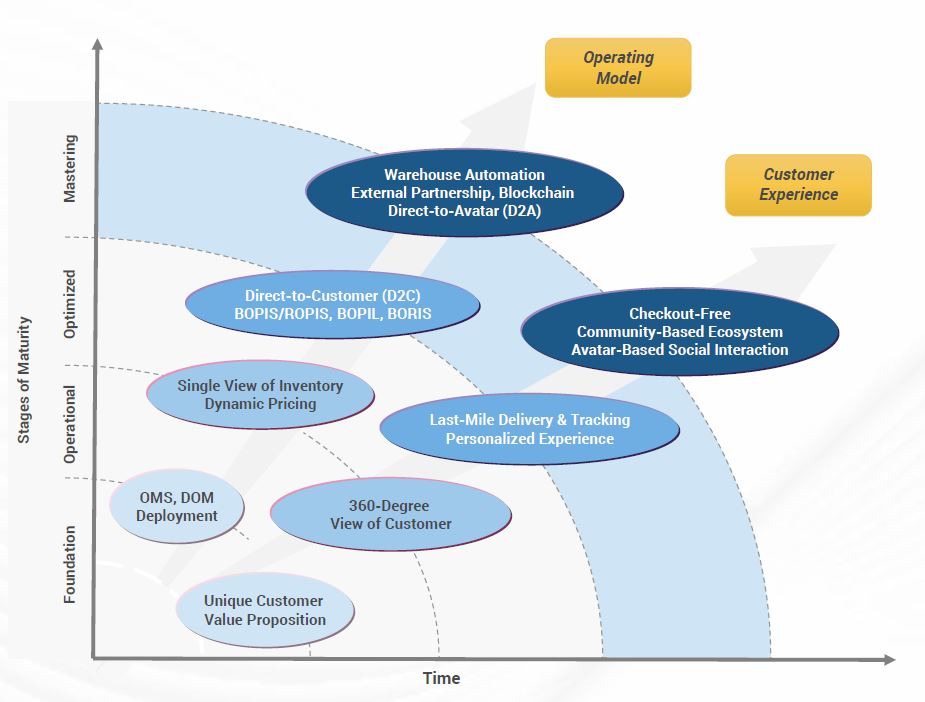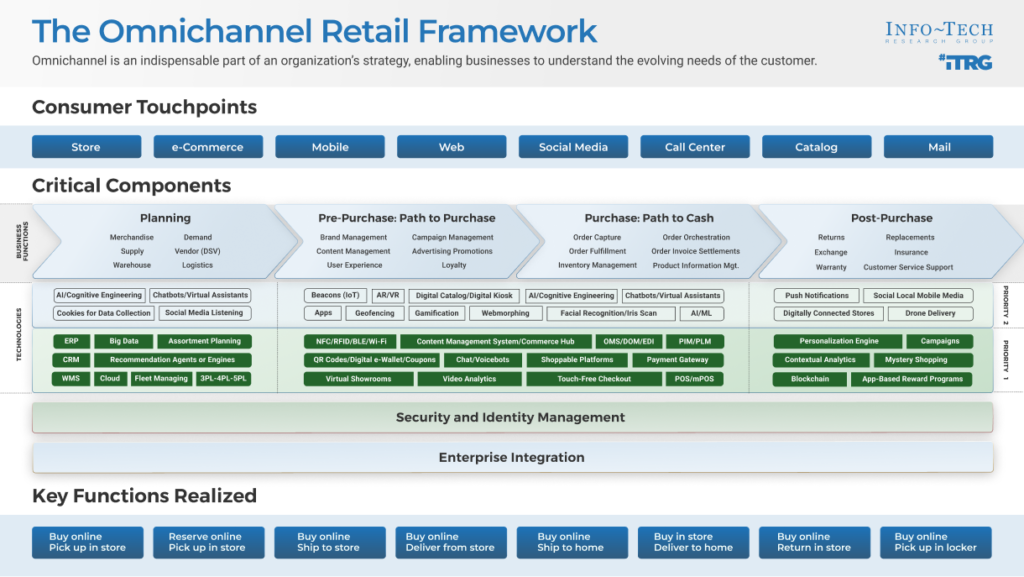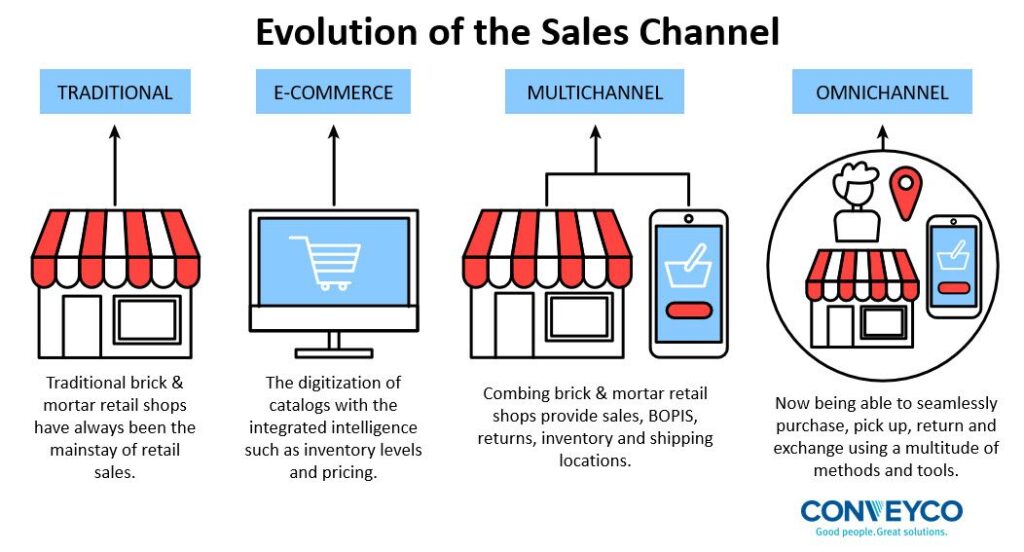
In the fast-paced world of retail, driving growth is a top priority for businesses striving to stay ahead of the competition. And in today’s marketplace, where customer expectations are constantly evolving, embracing the power of seamless omnichannel retail is key. This comprehensive guide, “Unlocking your potential: A guide to driving growth through seamless omnichannel retail,” is designed to equip you with the knowledge and strategies necessary to unlock your full potential and thrive in the digital era. With insights from industry leaders and practical tips, this guide will empower you to harness the power of omnichannel retail and take your business to new heights.

Understanding Omnichannel Retail
Omnichannel retail refers to a business approach that integrates multiple channels, both online and offline, to create a seamless and consistent shopping experience for customers. In this approach, the focus is on providing a unified experience across all touchpoints, from physical stores to websites, mobile apps, social media, and more. The goal is to meet customers’ expectations by allowing them to interact with the brand through their preferred channels and devices.
What is omnichannel retail?
Omnichannel retail goes beyond simply offering a presence on different channels. It involves creating a connected and integrated experience where customers can seamlessly transition from one channel to another. The core idea is to break down the barriers between channels, enabling customers to research, browse, purchase, and receive support in a way that is convenient and personalized for them.
Benefits of omnichannel retail
Adopting an omnichannel strategy offers numerous benefits for retailers. Firstly, it allows businesses to reach a wider audience by meeting customers where they are, whether it’s online or offline. This expanded presence increases brand exposure and potential sales opportunities.
Moreover, omnichannel retail improves customer satisfaction by providing a consistent and personalized experience. Customers can start their journey on one channel, such as browsing online, and seamlessly pick up where they left off in a physical store, enhancing convenience and reducing friction.
From a business perspective, omnichannel retail enables better data collection and analysis. With multiple channels integrated, retailers gain valuable insights into customer behavior, preferences, and purchasing patterns. This data can then be utilized to optimize marketing strategies, inventory management, and overall customer experience.
The evolution of retail channels
The retail landscape has undergone a significant transformation over the years, with different channels emerging and evolving to meet changing consumer demands. Initially, brick-and-mortar stores were the primary means of shopping. However, with the advent of e-commerce, online shopping quickly gained popularity.
As technology continued to advance, new channels such as mobile apps and social media platforms emerged, enabling retailers to engage with customers in new ways. Consumers now have the flexibility to interact with brands through multiple touchpoints, giving rise to the need for a seamless omnichannel experience.
Creating a Seamless Customer Experience
To deliver a seamless customer experience, retailers must understand and map the customer journey, personalize interactions, leverage customer data, and implement responsive web design.
Mapping the customer journey
Mapping the customer journey involves understanding the different touchpoints and interactions customers have with the brand. By visualizing this journey, retailers can identify pain points, opportunities for improvement, and areas where channels can be seamlessly integrated. This understanding helps in designing a more efficient and personalized experience for customers.
Personalization and customer segmentation
Personalization is a key component of a successful omnichannel strategy. Retailers can leverage customer data to segment their audience and deliver tailored experiences based on individual preferences, shopping habits, and demographics. By personalizing interactions, retailers can increase engagement, conversion rates, and customer loyalty.
Leveraging customer data
Collecting and analyzing customer data is essential for optimizing the omnichannel experience. Retailers can gather data from various sources, such as purchase history, website behavior, social media engagement, and customer feedback. This data can then be used to gain insights into customer preferences, identify trends, and make data-driven decisions to enhance the overall customer experience.
Implementing a responsive web design
As customers increasingly switch between devices, it is crucial for retailers to have a responsive web design. This means that the website adapts to different screen sizes and resolutions, ensuring a consistent and user-friendly experience across desktops, smartphones, and tablets. A responsive web design improves engagement, reduces bounce rates, and increases the likelihood of conversion.
Integrating Offline and Online Channels
Integrating offline and online channels is a vital aspect of omnichannel retail, as it allows retailers to provide customers with a consistent experience, regardless of where they choose to shop.
The importance of brick-and-mortar stores
While online shopping continues to gain popularity, brick-and-mortar stores remain a crucial aspect of the omnichannel experience. Physical stores offer customers the opportunity to see, touch, and experience products firsthand, which can enhance the overall shopping experience. Furthermore, physical stores serve as delivery points for online orders, offering convenience and flexibility.
Syncing inventory across channels
Inventory management is a critical aspect of omnichannel retail. It is important for retailers to have visibility and control over product availability across all channels in real-time. Syncing inventory ensures that customers have accurate information about product availability, prevents overselling, and enables efficient order fulfillment.
Offering click-and-collect options
Click-and-collect, also known as buy online, pick up in-store (BOPIS), is a popular option that bridges the gap between online and offline channels. It allows customers to purchase items online and pick them up at a nearby physical store, offering convenience and flexibility. Click-and-collect also provides an opportunity for additional in-store sales when customers visit the store to collect their purchases.
In-store technology innovations
Incorporating technology innovations into physical stores can enhance the omnichannel experience. For example, interactive displays, digital signage, and smart mirrors can provide customers with personalized product recommendations, access to product information, and a more engaging shopping experience. Furthermore, technologies like mobile point-of-sale (mPOS) systems enable seamless and convenient checkout experiences.
Leveraging Technology for Omnichannel Success
Key technologies play a vital role in achieving omnichannel success. Retailers can leverage various tools and platforms to enhance customer engagement and streamline operations.
Implementing a robust eCommerce platform
A robust eCommerce platform is the backbone of any successful omnichannel strategy. It should provide a seamless shopping experience, support multiple payment options, and integrate with other channels and systems. The platform should also offer features such as personalized product recommendations, easy navigation, and secure checkout to enhance customer satisfaction and drive conversions.
Utilizing mobile apps and push notifications
Mobile apps are a powerful tool for retailers to connect with customers and provide a personalized experience. Through mobile apps, retailers can send targeted push notifications, offering promotions, discounts, and product recommendations. This direct communication channel helps increase customer engagement and drive repeat purchases.
Integrating social media
Social media platforms have become a significant part of customers’ lives and present a valuable opportunity for retailers to engage with their audience. By integrating social media channels into their omnichannel strategy, retailers can leverage user-generated content, run targeted ad campaigns, and provide seamless shopping experiences directly within social media platforms.
Leveraging artificial intelligence and chatbots
Artificial intelligence (AI) and chatbots are revolutionizing customer service in the retail industry. Chatbots can handle customer inquiries, provide product recommendations, and assist with transactions 24/7. Through AI algorithms, retailers can analyze customer data, predict preferences, and deliver personalized experiences at scale. These technologies streamline customer interactions, reduce response times, and enhance overall customer satisfaction.

Optimizing Supply Chain and Logistics
Efficient supply chain and logistics operations are crucial for delivering a seamless omnichannel experience. Retailers must focus on streamlining inventory management, implementing a unified order fulfillment system, utilizing advanced analytics, and exploring partnerships.
Streamlining inventory management
Managing inventory across multiple channels can be complex, but it is essential for omnichannel success. Retailers must have accurate and real-time visibility into inventory levels to ensure product availability across all touchpoints. This requires efficient inventory management systems and processes, including implementing automated inventory tracking and replenishment.
Implementing a unified order fulfillment system
With multiple channels, it is crucial to have a unified order fulfillment system that seamlessly handles orders from various touchpoints, such as online orders, in-store pickups, and deliveries. This ensures efficient order processing, accurate inventory allocation, and timely order fulfillment. A centralized system also enables retailers to provide customers with real-time order updates and delivery tracking.
Utilizing advanced analytics and forecasting
Advanced analytics and forecasting techniques help retailers gain insights into customer demand, optimize inventory levels, and improve overall supply chain efficiency. By analyzing historical and real-time data, retailers can identify trends, forecast demand, and align inventory levels accordingly, reducing the risk of stockouts or overstocks. This data-driven approach also enables better planning and decision-making.
Exploring partnerships and collaborations
In the omnichannel landscape, partnerships and collaborations can be a valuable strategy. By partnering with other retailers or technology providers, retailers can expand their reach, tap into new customer segments, and leverage complementary capabilities. Collaborations also enable access to shared resources, such as shared inventory, fulfillment capabilities, and delivery networks, further enhancing the omnichannel experience.
Enhancing Customer Service and Support
Delivering exceptional customer service and support is a critical aspect of omnichannel retail. Retailers must focus on 24/7 customer service availability, offering multiple communication channels, investing in chatbots and virtual assistants, and providing self-service options.
24/7 customer service availability
Customers expect round-the-clock support in today’s always-connected world. Retailers should ensure that customer service is available 24/7 through various channels, including phone, email, live chat, and social media. This availability not only boosts customer satisfaction but also helps resolve issues promptly, reducing the risk of negative reviews or customer churn.
Offering multiple communication channels
Different customers prefer different communication channels. Retailers must offer a variety of channels, such as phone, email, live chat, social media, and messaging apps, to cater to different preferences. Providing multiple communication options allows customers to reach out through their preferred channel, increasing convenience and accessibility.
Investing in chatbots and virtual assistants
Chatbots and virtual assistants are increasingly being used to automate and streamline customer service interactions. These AI-powered tools can handle common inquiries, provide real-time support, and assist with transactions. By investing in chatbots and virtual assistants, retailers can improve response times, reduce customer wait times, and free up human agents to handle more complex issues.
Utilizing self-service options
Self-service options empower customers to find answers and resolve issues on their own, reducing the need for assistance. Retailers should provide self-service options, such as comprehensive FAQs, knowledge bases, and video tutorials, on their websites and mobile apps. This not only enhances the customer experience but also reduces the volume of incoming inquiries, allowing customer service teams to focus on more critical tasks.

Ensuring Data Security and Privacy
Data security and privacy are paramount in the omnichannel retail landscape. Retailers must prioritize compliance with data protection regulations, secure customer data, train employees on data privacy, and build trust and transparency.
Compliance with data protection regulations
Retailers must comply with applicable data protection regulations, such as the General Data Protection Regulation (GDPR) in Europe or the California Consumer Privacy Act (CCPA) in the United States. This includes obtaining the necessary consent from customers, protecting personal data, and ensuring secure data storage and processing practices.
Securing customer data
Handling customer data requires robust security measures to prevent data breaches and unauthorized access. Retailers should implement encryption technologies, secure networks and infrastructure, and robust access controls. Regular security audits and vulnerability assessments should be conducted to identify and address any potential vulnerabilities.
Training employees on data privacy
Employees play a vital role in ensuring data privacy and security. Retailers must provide comprehensive training on data protection best practices and educate employees about their responsibilities in handling customer data. Regular training sessions should be conducted to keep employees updated on evolving data privacy requirements and security threats.
Building trust and transparency
Building trust and transparency with customers is crucial in the omnichannel retail environment. Retailers should clearly communicate their data privacy policies, including how customer data is collected, used, and protected. Transparent practices, such as obtaining consent for data collection and providing easily accessible privacy policies, help foster trust and confidence among customers.
Measuring Omnichannel Success
To gauge the effectiveness of an omnichannel strategy, retailers must establish key performance indicators (KPIs), analyze customer data and behavior, utilize customer feedback and surveys, and continuously optimize and improve the omnichannel experience.
Setting key performance indicators
Defining and tracking KPIs is essential to measure the success of an omnichannel strategy. KPIs can include metrics such as conversion rates, average order value, customer retention rates, customer lifetime value, and customer satisfaction scores. By regularly monitoring these KPIs, retailers can assess the impact of their omnichannel efforts and identify areas for improvement.
Analyzing customer data and behavior
Customer data provides valuable insights into the effectiveness of an omnichannel strategy. Retailers should analyze data on customer behavior, preferences, purchasing patterns, and channel engagement. By understanding how customers interact with different channels and touchpoints, retailers can identify opportunities to optimize the customer experience and enhance overall performance.
Utilizing customer feedback and surveys
Customer feedback and surveys provide direct insights into customer satisfaction, pain points, and areas for improvement. Retailers should actively seek feedback from customers and leverage survey data to identify gaps in the omnichannel experience. This feedback can guide decision-making and help prioritize enhancements to deliver a more seamless and customer-centric experience.
Continuous optimization and improvement
Omnichannel retail is an ongoing process of optimization and improvement. Retailers should continuously analyze results, iterate strategies, and experiment with new approaches. By taking a data-driven approach and staying agile, retailers can adapt to changing customer needs and industry trends, continuously optimizing the omnichannel experience to drive growth and profitability.

Overcoming Challenges in Omnichannel Retail
While omnichannel retail offers numerous benefits, it also presents challenges that retailers must navigate to ensure success.
Managing channel conflicts
Managing channel conflicts, such as competition between online and offline channels, can be a challenge. Retailers must ensure that channels work together harmoniously, rather than cannibalizing each other’s sales. Strategies like click-and-collect can help bridge the gap between online and offline channels and mitigate conflicts.
Ensuring consistent branding and messaging
Maintaining consistent branding and messaging across different channels is crucial for brand identity and recognition. Retailers must ensure that messages, visuals, and tone of voice are aligned, regardless of the channel. Clear brand guidelines and centralized content management systems can help accomplish this, avoiding confusion and maintaining a cohesive customer experience.
Managing customer expectations
Customers now have high expectations for the omnichannel experience, expecting seamless interactions and personalized engagements. Retailers must proactively manage customer expectations by setting realistic delivery times, providing accurate product information, and offering transparent and reliable customer support. Meeting customer expectations is essential to build trust and loyalty.
Cultural and organizational challenges
Implementing a successful omnichannel strategy often requires organizational and cultural changes. Retailers must break down silos and foster collaboration and communication across departments. Employees must be trained and motivated to adapt to the omnichannel mindset, embracing change and championing the customer experience as a collective effort.
Case Studies: Successful Omnichannel Retailers
Several retailers have successfully adopted and implemented omnichannel strategies, setting examples for others to follow. Let’s explore some notable case studies.
Amazon: From online to physical stores
Amazon, originally an online marketplace, expanded into offline channels by acquiring physical store chains like Whole Foods. Amazon seamlessly integrates its online and brick-and-mortar presence, offering services like click-and-collect and in-store pickup for online orders. The company’s mobile app, Prime membership, and voice assistant, Alexa, create a connected and personalized omnichannel experience.
Nike: Seamlessly integrating online and offline
Nike has implemented a successful omnichannel strategy by integrating online and offline experiences. The Nike app and website provide personalized recommendations and exclusive offers, while Nike’s physical stores offer immersive experiences with interactive displays and personalized services. Customers can seamlessly transition between channels, allowing for a consistent and cohesive brand experience.
Starbucks: Leveraging mobile and loyalty programs
Starbucks has embraced mobile and loyalty programs to enhance its omnichannel strategy. The Starbucks mobile app allows customers to order and pay ahead, earn loyalty rewards, and enjoy personalized recommendations. The app seamlessly integrates with physical stores, enabling customers to simply pick up their orders and skip the line. This integration offers convenience, personalization, and enhanced customer engagement.
Best Buy: Omnichannel turnaround success
Best Buy successfully transformed its business by adopting an omnichannel approach. The company integrated online and offline channels, leveraging its physical stores as a key advantage. Best Buy implemented ship-from-store capabilities, allowing customers to access a larger assortment of products, regardless of their location. This omnichannel transformation repositioned Best Buy as a leader in the electronics retail industry.
In conclusion, omnichannel retail is a customer-centric approach that integrates multiple channels to provide a seamless and consistent shopping experience. By understanding the customer journey, personalizing interactions, leveraging technology, optimizing supply chain operations, and enhancing customer service, retailers can unlock their potential for growth in the dynamic retail landscape. While challenges exist, successful case studies serve as examples of how an effective omnichannel strategy can transform a business and deliver exceptional customer experiences.





Leave a Reply